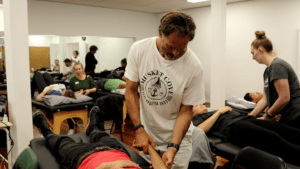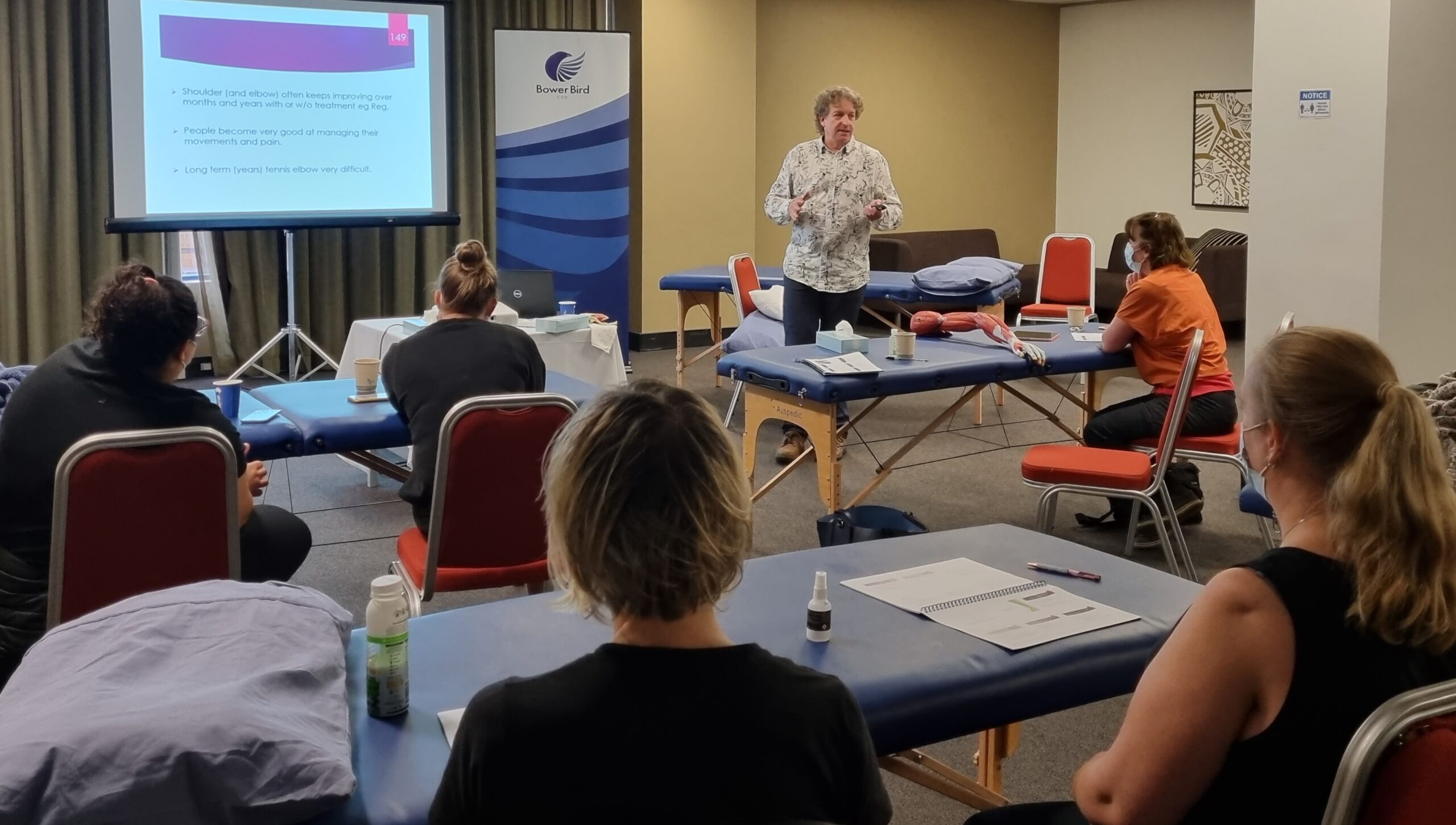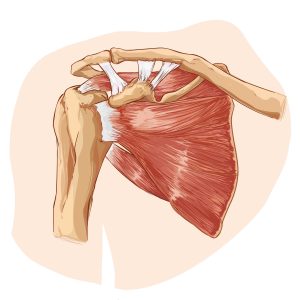There are currently no scheduled events for this course. To find out first when the next dates are added, sign up to our mailing list.
 Shoulder pain can be one of the most complex presentations a therapist will see. It can be difficult to understand, frustratingly slow to improve and limit the patient’s quality of life considerably. If you find shoulder impingement treatment tricky then this is the course for you.
Shoulder pain can be one of the most complex presentations a therapist will see. It can be difficult to understand, frustratingly slow to improve and limit the patient’s quality of life considerably. If you find shoulder impingement treatment tricky then this is the course for you.
Shoulder complaints are the third most common musculoskeletal cause of visitation to a general practitioner[1] with at least half of these persisting beyond 12 months[2]. Shoulder Impingement Syndrome (SIS) is the most common cause of shoulder pain[3] and a recent systematic review of interventional treatment for Shoulder Impingement Syndrome concluded the effectiveness of surgical or conservative therapies targeting the shoulder joint are limited.[4]
Don Hunter completed his PhD (University of Newcastle) in 2022, providing evidence that a relationship between thoracic posture and shoulder impingement syndrome (SIS) exists. Using a randomised control trial he established an evidence-based clinical approach to treating SIS using simple osteopathic techniques. In addition, as part of his PhD, Don provided an anatomical model describing why SIS occurs, which lends itself to the treatment of other upper limb conditions such as tennis elbow and wrist pain.
Shoulder Impingement: A Postural Model will review the normal anatomy and function of the shoulder complex, the pathophysiology of SIS, the most common differential diagnoses of SIS and their key clinical signs and symptoms, and evidence-based clinical testing for SIS. Don will describe why thoracic posture is so important in addressing SIS and provide an anatomical model, from his PhD, that provides an explanation for the occurrence of SIS. Using this model Don will provide a treatment framework for SIS as well as other wrist, elbow, upper limb and tendonitis conditions (such as tennis elbow).
Shoulder Impingement: A Postural Model is suitable for Osteopathy, Physiotherapy and Chiropractic practitioners. There will be a strong emphasis on practical sessions that you will be able to use with confidence in your practice immediately.
The course will run from 8:30AM to 4:00PM. Places are limited to 20 attendees. It also includes morning and afternoon tea, printed notes and an e-certificate of attendance for your CPD records. The course can be counted as 6.5 hours CPD.

I have always found shoulders a little bewildering. Treatments have been hit and miss over the years. This course gives me a good evidence based foundation in relation to shoulder pathology, specifically impingement. And we learned how to treat! Most excellent day.
Felicity Marguin
Loved it! One of the best courses I’ve been to. Really useable information and relatable to practice. Good spacing with breaks and amount of theory and prac. Don was great at presenting - engaging and observant of the audience.
Great case studies, good class size, everything was well organised. Wouldn’t change anything.
Heather
Don did a great job in presenting all the information with character, he had some jokes in there and you could tell he had a-lot of passion for shoulders. It made it very easy to follow along with all the information and data/statistics that would otherwise be dry.
I really, really liked all the graphs. They helped give us a visual to accompany all the information that was given to us, the images of the cadavers were also really great and helped us visually see the relationship of fascia with other anatomical structures in the shoulder especially the triceps.
The practical component was really great. It helped that it was a smaller class and we had a good amount of one on one
Don had a lot of great case study examples which helped put the theory into practice. He helped us understand that ideally not everything is textbook and gave us some examples of tricky shoulder presentations.
ANON

[1] Greving K, Dorrestijn O, Winters JC, et al. Incidence, prevalence, and consultation rates of shoulder complaints in general practice. Scandinavian Journal of Rheumatology. 2012;41(2):150-155.
[2] Van der Heijden GJMG. Shoulder disorders: a state-of-the-art review. Bailliere's Clinical Rheumatology. 1999;13(2):287-309.
[3] Mayerhoefer ME, Breitenseher MJ, Wurnig C, Roposch A. Shoulder impingement: relationship of clinical symptoms and imaging criteria. Clinical Journal of Sport Medicine. 2009;19(2):83-89.
[4] Saltychev M, Aarima V, Virolainen P, Laimi K. Conservative treatment or surgery for shoulder impingement: systematic review and meta-analysis. Disability & Rehabilitation. 2015;37(1):1-8.